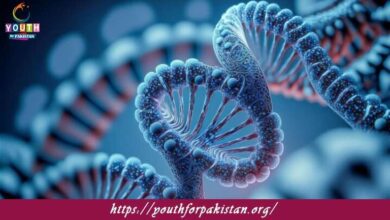11th Class Biology Chapter 3 Quiz with Answers

“11th Class Biology Chapter 3 Quiz: Enzymes” explores the biocatalysts that drive the biochemical reactions necessary for life. Understanding enzymes is important for MDCAT students since it gives a foundation to topics such as metabolism, cellular processes, and medical applications. Our MDCAT Quiz for this chapter ensures you understand the key concepts and are well-prepared for exam-related questions.
The chapter first defines enzymes as biological catalysts that increase the rate of chemical reactions without being consumed. Students will learn about the structure of enzymes, which are mainly proteins, and their specificity to substrates due to the active site. The concept of the enzyme-substrate complex is introduced, together with the lock-and-key and induced-fit models of enzyme activity.
The chapter describes the factors affecting enzyme activity, including temperature, pH, substrate concentration, and the presence of inhibitors. It explains how enzymes have an optimal temperature and pH at which they are most active, and how, if these conditions are deviated from, the enzyme denatures—becomes inactivated. Students will also learn about competitive and non-competitive inhibitors and their effect on enzyme function.
Another important topic is the classification of enzymes according to the type of reaction they catalyze. Students will learn about examples such as oxidoreductases, hydrolases, and transferases, with a focus on their specific roles in biochemical pathways. The chapter also includes cofactors and coenzymes, which assist enzymes in catalyzing reactions, and points out the importance of vitamins as coenzyme precursors.
MDCAT Quiz: Test Your Knowledge of Enzymes End
Our MDCAT Quiz for Chapter 3 challenges students with questions on enzyme structure, active site models, factors affecting enzyme activity, enzyme inhibitors, and cofactors and coenzymes. This quiz helps reinforce your understanding of enzymes and prepares you for MDCAT exam questions on this topic.
- Test Name: 11th Class Biology Chapter 3 Quiz
- Type: Quiz Test
- Total Questions: 30
- Total Marks: 30
- Time: 30 minutes
Note: Answer of the questions will change randomly each time you start the test, once you are finished, click the View Results button.
Free Flashcards for Enzymes
Revise efficiently with free flashcards for Chapter 3. These flashcards cover important topics such as the enzyme-substrate complex, enzyme inhibition, active site models, and enzyme classifications. Use flashcards for quick revisions and concept reinforcement before the MDCAT exam.

What is the effect of increasing substrate concentration on enzyme activity in a non-saturated system?
Increases

What is the name of the model that describes enzyme-substrate interactions as induced fit?
Induced fit model

What is the name of the model that describes enzyme-substrate interactions as a rigid lock-and-key fit?
Lock and key model

What is the effect of increasing substrate concentration on enzyme activity in a saturated system?
No effect

Which of the following is NOT a characteristic of enzyme catalysis?
Enzymes are consumed in the reaction

What is the effect of increasing substrate concentration on enzyme activity in a non-saturated system?
Increases

What is the term for the substance that inhibits an enzyme by binding to the active site?
Competitive inhibitor

Enzymes lower the activation energy required for a chemical reaction to proceed by ____________.
Providing an alternative pathway

What is the effect of increasing substrate concentration on enzyme activity in a saturated system?
No effect

The Michaelis constant (Km) is a measure of the ____________.
Affinity of the enzyme for its substrate

What type of enzyme inhibition occurs when the inhibitor binds to a site other than the active site, altering the enzyme's shape?
Non-competitive

What is the name of the model that describes enzyme-substrate interactions as induced fit?
Induced fit model
Experience the real exam environment with our expertly designed collection of over 25,000 MCQs MDCAT Mock Tests.





